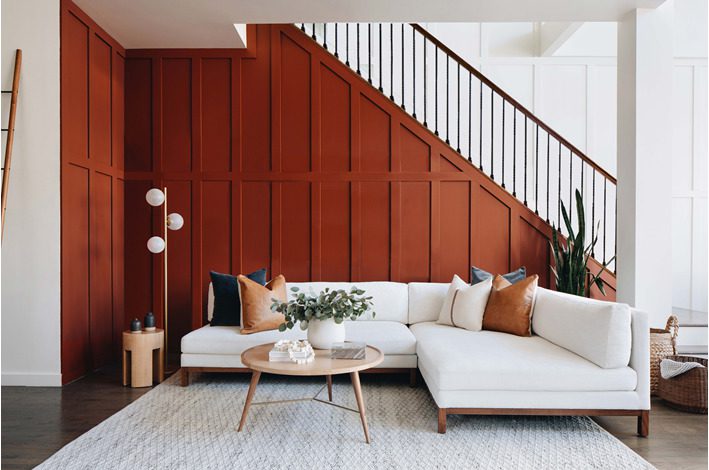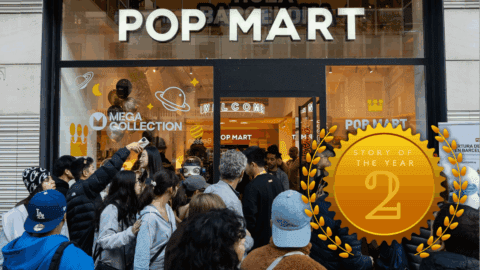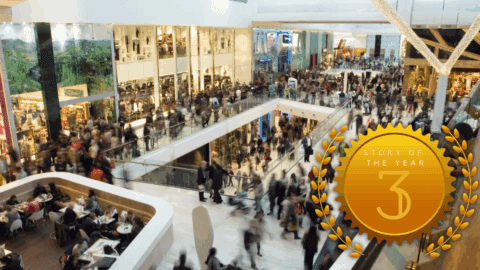So many of the digital native brands making a splash these days seem to have started the same way — Jane (or Joe) Founder wanted a better product or experience, and when she couldn’t find it she went out and created it. This kind of category-specific innovation is largely possible because of that great democratizer, the internet, which has made it easier than ever before to bring new retail concepts to niche consumer groups at the scale required for success.
In this regard, furniture company Interior Define is no different than its DTC counterparts. What is different is how Interior Define has leveraged technology to create a hyper-personalized product offering, delivered via a hyper-localized omnichannel experience.
The company got its start when founder Rob Royer was having a hard time finding just the right sofa. Custom options were expensive and the offerings at traditional retailers weren’t hitting the mark. Out of that quandary, Interior Define was born in 2014, with the goal of giving consumers access to made-to-order sofas at a competitive price point. (Side note: Retail innovation runs in the family — Royer is married to Monica + Andy Founder Monica Royer.)
Flash forward to today, when Interior Define’s digital roots and integrated omnichannel approach helped it roll with the pandemic punches and see 200% YoY growth in January 2021.
“Democratizing customization is really at the heart of our brand,” said Jill John, Chief Customer Officer at Interior Define in an interview with Retail TouchPoints. “It’s the ability to be able to define what you want. The sofa is the core of every home, and as the home is a reflection of your personality, that sofa should also be an extension of your personality. We’ve been able to provide this value proposition of endless customization coupled with something else that was missing, design expertise.”
The company is led by executives with solid retail bona fides: CEO Antonio Nieves is a DTC veteran, formerly with ModCloth and Bonobos, and John spent time at Serena & Lily and Williams-Sonoma before joining the Interior Define. This executive-level expertise is a crucial piece of the brand’s success, along with:
- A product assortment that allows for hundreds of thousands of variations coupled with the advice of local design experts to guide the process;
- A data-driven store expansion model that speeds the path to profitability for its brick-and-mortar stores; and
- Optimizations such as in-house development and an inventory-free ecosystem that help keep costs down.
The ‘Secret Sauce’: Access to Local Design Experts, for Free
Customers can begin the design process online or at one of the eight Interior Define brick-and-mortar stores — referred to as Guideshops — around the country. Online or offline, they are immediately offered the opportunity to connect with local design experts who help guide them through the process.
While the sofa and sectional are Interior Define’s hero products, the company has expanded to include chairs and ottomans as part of its customizable product lineup. Clients can create hundreds of thousands of combinations by selecting from 15 style collections, more than 20 leg options, 100+ fabrics and a variety of dimensions to develop their own one-of-a-kind piece of furniture.
The company’s product assortment also has been expanded to include other “aligning categories,” including accent tables, rugs and lighting, which, while not customizable at the level of the brand’s upholstery offerings, can be tailored with different sizes and finishes.
The integration of one-on-one design consultations is a key differentiator for the brand. “Our design specialists are really the secret sauce of the brand,” said John. “We want all of our customers to have access to a design specialist who can walk them through the process. We find that when we do that, our conversions go up, our average order size goes up, our NPS scores go up and our return rates go down.”
Whether virtual or in-person, Interior Define design specialists are local experts who help clients home in on the aesthetic and function they’re trying to achieve, take measurements and put together mood boards — all at no additional cost. The idea of keeping these expert resources local — even in a virtual setting where common geography isn’t necessarily a requirement — has turned out to be key to the offering’s success.
“You could have someone in Miami helping someone in New York City and drive pretty solid results, but what we discovered as a result of COVID was that if we actually put the design specialists in the same market where the demand was, that design specialist just understands the regional aesthetic better,” said John. “In a Dallas home, the scale and the fabrics that they use are different than a Brooklyn walk-up. When we have people in specific markets who can speak to [that market’s] aesthetics and are in tune with those customers, we found that drives even more conversion and engagement.”
Using Digital Stores as a Proving Ground for Brick-and-Mortar Expansion
Those local “feet on the ground” (digitally speaking) also help Interior Define test a market’s readiness for new brick-and-mortar locations.
Last year because of the pandemic, the company postponed plans to open several new physical locations, instead launching a series of regionally focused digital stores. These e-Guideshops are accessible by appointment. Customers meet virtually with a local design specialist who walks them through the process, just like they would in a physical store, while also helping them navigate the website and use a suite of digital tools including mood boards, space planning tools and an AR app that lets customers test out their creation in their room.
The e-Guideshops have been so successful that the company plans to continue operating them even as they expand their physical footprint, not least because they serve as a proving ground for future brick-and-mortar locations.
“These virtual Guideshops allow us to put design specialists in a local market and assess whether or not the demand is there,” explained John. “If it is, we’re signing leases to eventually transition that virtual Guideshop into brick-and-mortar. The accelerated demand curve it creates is that much greater because by the time we open the doors, we’ve already had design specialists pre-establishing relationships in the local market. When we open, we know exactly what sofas and fabrics to have on display, and we’ve already created a clientele, so the ramp-up to profitability in those brick-and-mortar stores is just that much faster.”
Interior Define is now moving full steam ahead, with plans to open 10 to 15 new locations by the end of the year. The brand also is planning to expand the size of its stores, from the current average of approximately 2,500 square feet to around 4,000 square feet, with a more lifestyle-oriented store design. “Whereas before it might have been just a line of sofas, now we’re creating unique spaces where the customer can see how everything works together,” said John.
Even with this brick-and-mortar expansion, the brand’s approach remains firmly omnichannel. Each store’s design specialists continue to offer virtual consultations, and home visits are on the horizon once the pandemic subsides.
“As a digitally native brand, data has always been at our core,” said John. “We’ve always been intent on digital first, and we see the stores as an extension of that. It’s really important to this level of customization and for the value proposition that we offer that we match the online with our offline.”
Making the Economics of Made-to-Order Furniture Work
This focus on a seamless omnichannel experience across all channels it part of what allowed Interior Define to react quickly when the pandemic hit, with its virtual store model allowing the company to grow despite store closures. A number of other unique aspects played in the retailer’s favor last year as well — namely that its made-to-order model means the company operates without inventory. This allowed Interior Define to avoid some of the supply chain woes that hampered other retailers.
In fact, the inventory-free model is a key element of Interior Define’s ability to offer customized product offerings while keeping prices competitive (the company’s AOV is $2,500, according to John). “Whereas some brands are maintaining large warehouses of inventory, or inventory is taking up 40% of their retail space in a back room, we don’t have that because everything is made to order. We save a significant amount of revenue by operating an inventory-free model,” she said.
Other elements that allow Interior Define to keep the cost of customization down include:
- Low development costs: All of Interior Define’s designers are employed in-house, working out of company headquarters in Chicago, and they use digital tools for design and development. “This allows us to be really nimble,” said John. “Our go-to-market time for a new design is three to six months, whereas some brands go through a process that’s nine to 12 months.”
- Cutting out the manufacturing middleman: The company’s products are produced in China, but rather than working through an agent they have an internal design team in China that acts as intermediary between the brand and the factory floor.
- Optimizing raw materials: All of Interior Define’s products are made using the same wood, cushion fills and fabric, which allows the company to buy in bulk and then customize at scale.
Interior Define’s inventory-free model didn’t allow it to escape completely unscathed from the supply chain woes of 2020. Because their manufacturing is done in China, the company is still struggling with the shipping challenges plaguing many retailers, including container and chassis shortages and port congestion. “We don’t have the added burden of trying to delete excess inventory, which is a plus, but we’re all struggling with how to expedite and work around some of the delays that we’re seeing,” said John.
Those delays don’t seem to be slowing the company’s growth though. In addition to the new store openings, Interior Define also is planning to expand beyond the living room into the dining room and office categories, as well as additional textiles such as custom pillows. John also said that following the momentum of 2020, the company is now turning its attention to retention.
“Now that we’ve captured all this amazing market share through our marketing efforts and our store expansion, we’re really focusing on that loyalty loop,” she said. “We’re excited to be able to expand our assortment so that we have multiple reasons to drive people back into the business, and we’ll be exploring a lot of new, exciting retention programs and initiatives to really drive that loyalty.”













